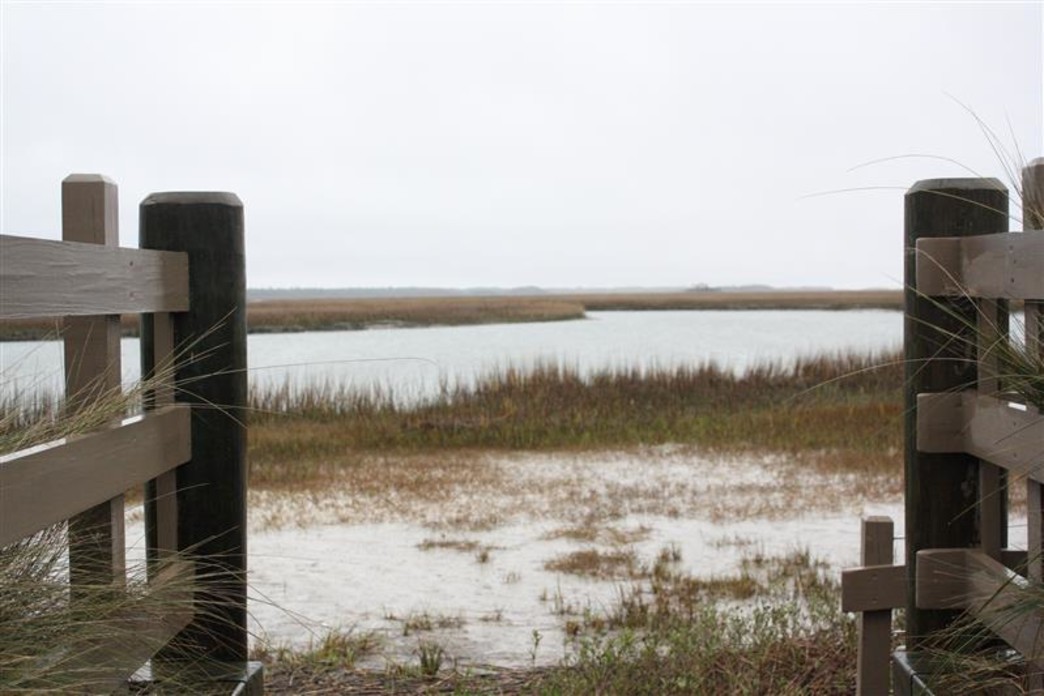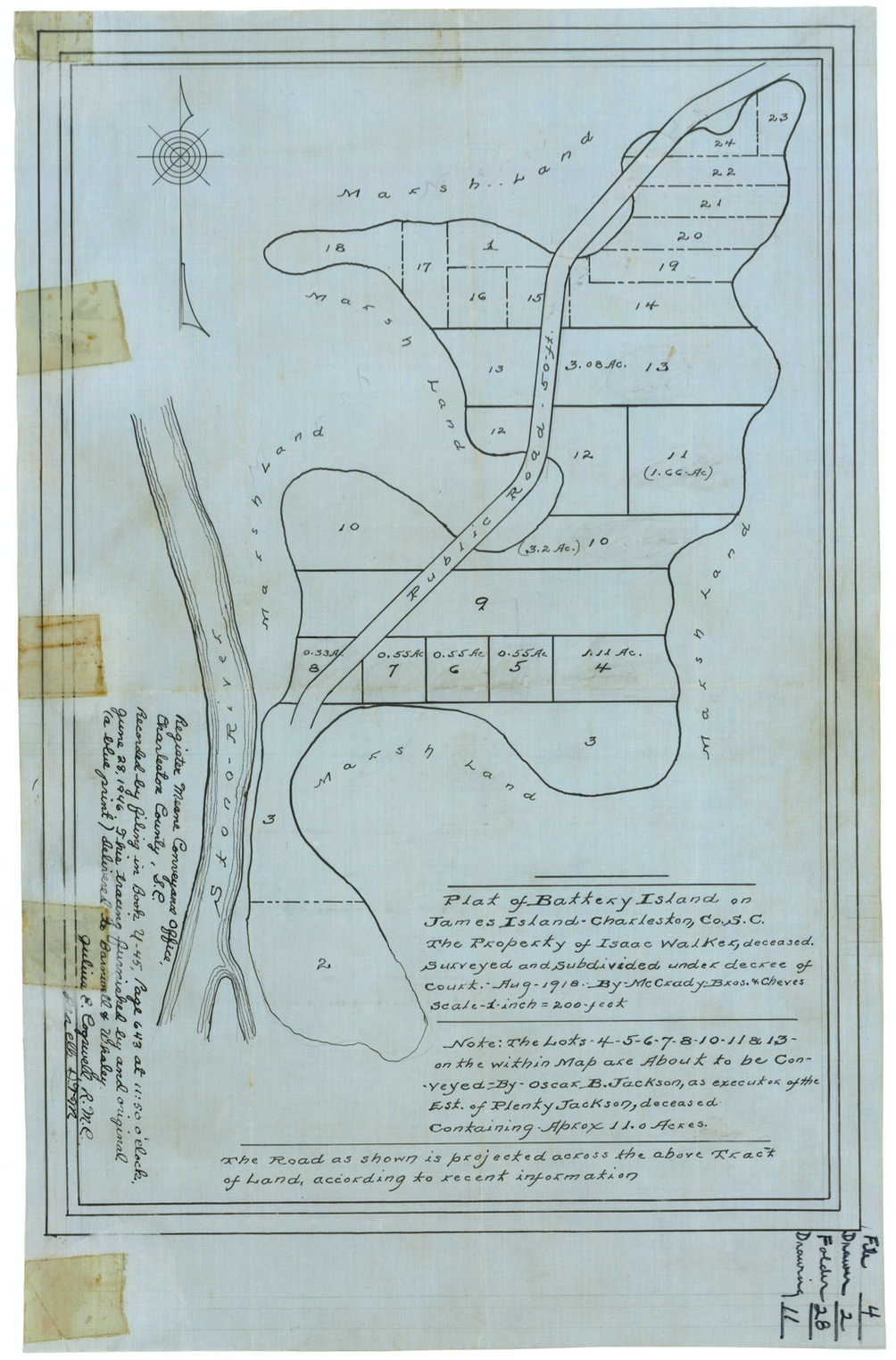Sol Legare: James Island’s Hidden Sea Island Gem
By Christina R. Butler/Butler Preservation for Charleston Empire Properties – 14 November 2019
Sol Legare, a small barrier island located between James and Folly Islands, has antebellum
roots and an important twentieth century civil rights legacy. Today Sol Legare is a mix of historic African
American neighborhoods and new subdivisions nestled near the marshes of Folly Creek and its tributaries.


Like much of the Lowcountry, James Island was settled as rice and cotton plantations, and the majority of the population in the early nineteenth century was enslaved. Maps of Sol Legare from the 1820s show several plantation buildings which are probably slave dwellings. Solomon Legare, a wealthy planter and descendent of prominent French Huguenots and the son of Thomas Legare, is the namesake of the island. Legare used the island for cultivation and livestock grazing. His name appears on maps of James Island by the 1860s, the name Sol Legare Island came into use by the 1870s.

During the American Civil War, there were at least two skirmishes on Sol Legare in 1862, and one involved the famous 54th Massachusett Volunteer Infantry, one of the first sanctioned African American Union regiments. After the war, freed people who had previously been enslaved on James and Sol Legare Island purchased small farms of about 15 acres each that were once part of the plantation, and a robust African American farming and fishing community emerged. In 1919 there were about 40 active farms on Sol Legare, along with a white church, a “Negro School”, and three business establishments (probably general stores or taverns.) Modest vernacular houses from the 1920s and 1930s line Sol Legare Road, and many have been in the same family for generations.
Located within Sol Legare is Mosquito Beach, an African American recreational community, which was one of five beaches in Charleston County where black residents could vacation during the Jim Crow era of segregation. In the 1950s and 1960s, it boasted seafood stands and restaurants, dance clubs, bars, and a boardwalk pavilion. Recently, Historic Charleston Foundation secured a grant to document and restore Mosquito Beach, noting that, “the protection of communities such as Mosquito Beach are vital to preservation, and the history of Charleston is not complete until everyone’s history is represented.”


The Seashore Farmers Lodge 767, a circa 1915 wood frame building with a wide and welcoming porch, remains an important community landmark. Fifth generation resident Ernest Parks spoke the importance of the fraternal Lodge in the African American community: “Seashore embodies freedom. We would plant our seeds, farm the land, and we would take it and sell it down on the market. For the longest time, we never worked for anybody but ourselves." It was recently restored and listed on the National Register of Historic Places, and it now functions as a museum and gathering place.
Sol Legare Island saw an upsurge in development interests in the 1980s as the Charleston area entered a building boom that is still underway. Sherman Agency installed sewerage and water lines and six paved roads to access the new community. Sol Legare Preserve is the newest subdivision, which features beach style homes near the Sol Legare boat landing and adjacent to the marshes and earlier historic communities.
To learn about the current real estate on Sol Legare Island give us a call or download our mobile app! Our Charleston realtors are familiar with the area and other locations on James Island . With our vast experience and expertise, we’ll help you find the property of your dreams!

Sources:
–
National
Register listing, Seashore Farmers Lodge 767.
–
McCrady
Plat Series, South Carolina Department of Archives and History (#1068, 1255)
–
Frazier,
Eugene Sr. James Island: Stories from
Slave Descendants. Charleston: Arcadia Publishing, 2006
–
Bostick,
Doug. A Brief History of James Island. Charleston:
Arcadia Publishing, 2008
–
Trinkley,
Michael. The Archaeology of Sol Legare
Island, Charleston County, South Carolina. Columbia: Chicora Foundation,
1984.
–
“The
Heart of Sol LEgare: the residents of this historic black community work to
preserve its legacy.” Charleston City
Paper. 6 February 2013.
–
Avery
Research Center. Collection guide, “Inventory of the Mosquito Beach Community
Collection, 1953-1990.” https://avery.cofc.edu/archives/Mosquito_Beach_Community.html
–
Historic
Charleston Foundation, “Charleston County Passes Historic Preservation
Ordinance,” 3 September 2018. https://www.historiccharleston.org/blog/charleston-county-passes-historic-preservation-ordinance/
–
“Charleston
Harbour and Adjacent Cost and Country” 1823. https://www.loc.gov/resource/g3912c.ct003198/?r=-0.023,0.664,0.79,0.324,0

